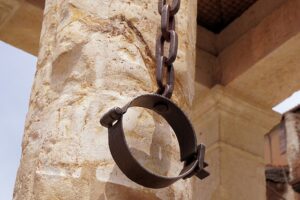
THE FATE OF THE ANUSIM
As we have seen, the Arab period of Al-Andalus was very prosperous for Muslims, Christians, and Jews. However, several factors worked against Christianity at that time, including Catholic celibacy.
Both imams and rabbis led normal lives and could procreate, whereas Christian priests had to live monastic lives and could not marry or have children. Although wisdom and ministerial preparation are not inherited in any of the three religions, both imams and rabbis could exert more influence through a social life closer to the people, and even more so on their children and relatives.
This, along with a well-designed and effective educational system, produced a large, well-prepared Jewish group that socially influenced much more than Catholic Christianity. In reality, Christian influence was more through fear. Although Jews were never the ruling class, they were always very useful to both Catholic and Muslim powers due to their success in areas such as commerce, science, and administration. This might seem positive, but it also created a vassal image of the Jews. So, whenever an attack on the ruling power was desired, it was done through attacks on the Jews.
With the increasing loss of Muslim control over Spanish territories, a growing Christian onslaught against the Jews began to appear. Mistreatment, looting, manipulation, and even massacres, such as the one in Seville on June 6, 1391, where over 10,000 were killed, were the hallmarks of this assault.
Faced with such a difficult situation, which Jewish communities had not experienced since their arrival in Spain, the solution found by many families was conversion to the Catholic faith. This began what is known as the “unofficial forced conversion.” Despite its “unofficial” status, it was widespread. This, along with bloody attacks, led to the simultaneous disappearance of several Jewish quarters (juderías) in different cities.
With the final defeat of the Muslim empire, the Islamic population density almost completely declined, adding more fuel to the tension between Catholicism and the only remaining “enemies” in the area: the Jews. Although many had converted to save themselves, and others were genuinely attracted to Christianity, they never thought they would also have to abandon their Jewish customs, which was non-negotiable for Catholicism, considering anything else heretical. So, in 1482, the Inquisition was established to eradicate all vestiges of any culture other than Catholic Spanish.
If someone had never eaten pork, just as Westerners do not eat dogs, they now had to start eating it, especially publicly at festivals. The same applied to circumcision, which they had to abandon; prayers could not be in the Jewish style even if done in Jesus’ name; the Sabbath had to be forgotten; names had to be mostly New Testament names like Peter, Paul, or John; they could no longer read the Bible in Hebrew but had to listen to it in Latin at cathedrals, even if they did not understand it.
This situation led to Judaism being completely erased from the minds of those families forced to convert (the anusim). Many believed it would be a short time and that everything would return to normal, but the reality was that within a few generations, there was nothing left of their historical memory. Today, those of us who know a little more about Jewish culture can see many vestiges of some customs impossible to eradicate from any culture, but with no conscious connection to that family ancestry.
For example, boiling milk in a separate container from any other, claiming that milk corrupts; the custom of knocking on wood to prevent things from going wrong; some songs that only changed part of their lyrics, like the one about Uncle Perico’s wedding; kissing a piece of bread and throwing it away before eating the rest; washing hands before eating not only for hygiene but as if it were an offense to the rest of the diners, and many others.
A large number of these anusim moved to the New World, to countries like Cuba, Puerto Rico, Venezuela, Mexico, Colombia, and others. However, almost none of them escaped the fear produced by the Inquisition, which also moved to the new region. So, there were no returns of these anusim to their cultural roots until the early 20th century, with the arrival of Sephardim and Ashkenazim in America, and under a new context of modernity in which many began to analyze their ancestors’ non-Catholic history.
In another article, we will address the topic of the Sephardim, those who decided to leave Spain and renounce everything rather than abandon their Judaism.
Final.
Author: Dr. Liber Aguiar
0 Comments